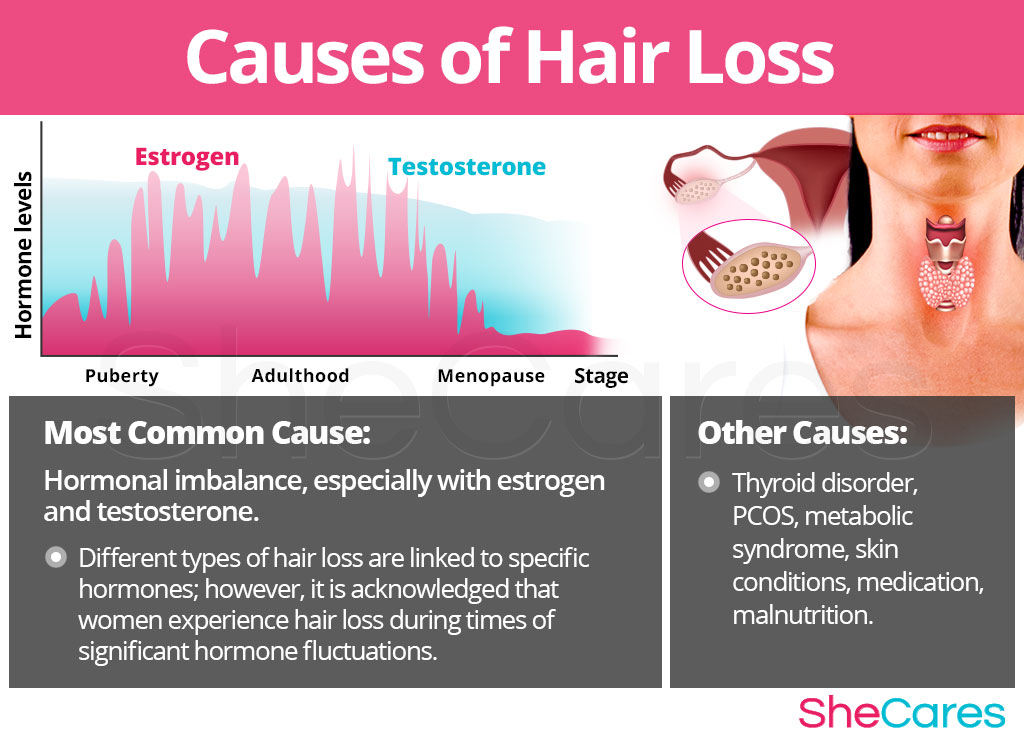Table Of Content
- It's possible to keep hair loss from progressing, thanks to a number of noninvasive treatments.
- When should I see a healthcare provider?
- Addressing shortfalls through diet and supplements: Does it help hair growth?
- Stay on top of latest health news from Harvard Medical School.
- iron
- Hair loss in women: Causes, prevention and treatments

The lauric acid found in coconut oil helps bind protein in hair, protecting it from breakage at the root and strand. Massaging coconut oil into your scalp may promote better blood flow and help with regrowth. Hair follicles are made up mostly of a protein called keratin. The only way to treat poison-induced hair loss is to diagnose what poison you have been exposed to. Hair typically regrows after someone stops poison exposure. Human immunodeficiency virus (HIV) can also indirectly cause hair loss.
It's possible to keep hair loss from progressing, thanks to a number of noninvasive treatments.

They may interact with other medications or supplements you take. Hair usually regrows when your hormones get back to normal. Your hair can regain its usual fullness 6 to 9 months after childbirth.
When should I see a healthcare provider?

Treatments for hair loss are more likely to be successful if started early. It’s best to see a healthcare professional for any unexplained hair loss so they can determine the underlying cause and best course of treatment. There’s a range of treatment options for hair loss, but the best option for you will depend on what’s causing your hair loss.
Addressing shortfalls through diet and supplements: Does it help hair growth?
If you’re looking for a concealer, such as a spray or powder that can hide hair loss, you’ll find many products available online. With endless choices, it can be helpful to have a dermatologist guide you in selecting one. It’s essential that you not become pregnant while taking spironolactone. To prevent pregnancy, your dermatologist will also prescribe a birth control pill if it’s possible for you to get pregnant.
Medication
Along with hair loss, other signs of PCOS include weight gain, acne, and irregular periods. Beyond that, age, hormones, stress, and even the way you style your hair can lead to hair loss. Female hair loss happens when a woman, or anyone who was identified as female at birth, loses more hair than normal. About half of all women will have hair loss at some point in life. Most start to notice it in their 50s or 60s, but it can happen at any age and for a variety of reasons.
Androgenic alopecia
It’s important to talk with a healthcare professional before you begin using essential oils and be sure to research the quality of a brand’s products. While sudden or extreme hair loss can be alarming, there are often simple solutions. By addressing the underlying cause and making some lifestyle changes, you may be able to stop or prevent hair loss.
Postpartum Hair Loss: Treatments And Prevention – Forbes Health - Forbes
Postpartum Hair Loss: Treatments And Prevention – Forbes Health.
Posted: Wed, 14 Jun 2023 07:00:00 GMT [source]
Female pattern baldness (androgenetic alopecia) is the most common cause of hair loss in women, but there are many other potential causes. Minoxidil (Rogaine) is a topical medication (the type you apply to your scalp) approved by the FDA for female pattern hair loss. It's is available over the counter as 2% and 5% solutions. It takes about 6-12 months of this once-daily use foam treatment to see results. But if your follicles become damaged, the hair loss may be permanent. See your dermatologist if you notice this type of hair loss.
But you might find it helpful to know that there are several things you can do to help prevent hair loss or encourage hair growth. Both hyperthyroidism (an overactive thyroid) and hypothyroidism (an underactive thyroid) can cause hair thinning. This hair loss is typically temporary, and treating thyroid dysfunction can help regrowth. However, some thyroid medications can also cause hair loss. Postpartum hormonal changes and stressors are more likely to cause hair to fall out.
JAK inhibitors approved by the FDA to treat alopecia areata include Litfulo (ritlecitinib), Olumiant (baricitinib), and Opzelura (ruxolitinib). Tinea capitis (ringworm) treatments depend on the type of fungus causing the infection. For Trichophyton infection, oral Lamisil (terbinafine), Sporanox (itraconazole), and Diflucan (fluconazole) may be prescribed. There’s some evidence that Gris-PEG (griseofulvin) is effective against another fungus, Microsporum. Yes, hair tends to regrow when you are no longer exposed to the poison.
It also has various side effects, including loss of libido and erectile dysfunction. Possible side effects include scalp irritation and acne at the site of application. Rarer side effects include irregular heartbeat and blurred vision. Also known as Rogaine, this over-the-counter drug is known to help with hair loss. Skip tight braids or ponytails that may pull on your hair at the root and potentially lead to excessive shedding.
Hair grows on almost all of your skin surfaces — not the palms of your hands, soles of your feet, lips or eyelids. If you are experiencing hair loss, you are not alone—35 million men and 21 million women in the United States are also experiencing hair loss. Use these professionally produced online infographics, posters, and videos to help others find and prevent skin cancer.
No comments:
Post a Comment